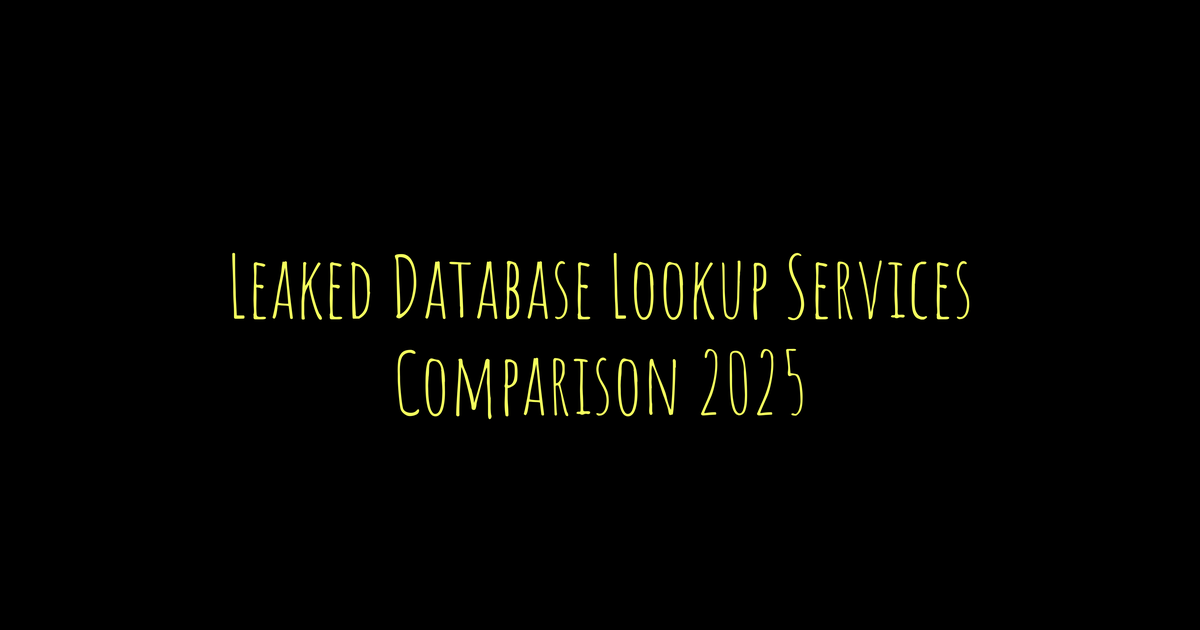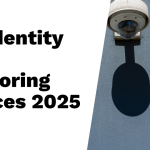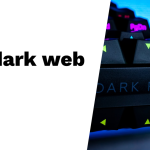Leaked database lookup services in 2025 have become more advanced, offering larger datasets and real-time breach monitoring to help users stay ahead of data exposure risks. Leading platforms like DeHashed and Leak-Lookup provide extensive records—DeHashed focuses on comprehensive, affordable access with private dataset inclusion, while Leak-Lookup boasts the largest volume of breach data with flexible pay-per-use pricing. Both offer API integrations for security workflows, though their features differ slightly. For organizations seeking broader cybersecurity coverage, enterprise platforms such as UpGuard add vendor risk and attack surface management alongside credential monitoring. Overall, choosing a service depends on the balance between data size, response speed, cost model, and privacy practices.
Table of Contents
- What Are Leaked Database Lookup Services in 2025
- DeHashed: Features, Pricing, and Data Coverage
- Leak-Lookup: Strengths and Limitations
- Enterprise Platforms for Data Leak Detection
- Choosing the Right Lookup Service: What to Consider
- Emerging Trends in Leak Lookup Services
- Comparison Table of Top Leak Lookup Services
- Summary of Leading Leak Lookup Options
- Frequently Asked Questions
What Are Leaked Database Lookup Services in 2025
Leaked database lookup services in 2025 are tools that let users search through compromised personal data exposed in breaches and leaks. These services pull together information from various sources including the clear-web, deep-web, and dark web, offering a broad and up-to-date view of exposed data. Users range from individuals checking if their credentials have been leaked, to security professionals and organizations monitoring their data exposure to prevent identity theft, fraud, and account takeovers. Today’s services handle massive datasets often exceeding billions of records and provide real-time monitoring to quickly alert users about new breaches. Many offer API integrations, allowing businesses to embed breach data directly into their security systems or workflows. Pricing varies widely, from free or freemium models to pay-per-lookup and subscription plans, making these services accessible for different needs and budgets. Beyond just credential exposure, some platforms also provide additional intelligence like WHOIS details and IP reputation to support fraud prevention and threat investigations. Privacy remains a key focus, with many services ensuring minimal logging and encrypted access to protect user data while delivering comprehensive breach insights.
DeHashed: Features, Pricing, and Data Coverage
DeHashed stands out in 2025 with its extensive database, indexing over 13.3 billion records sourced from clear web, deep web, and dark web layers. Its dataset includes a wide range of information such as usernames, email addresses, IP addresses, and historical WHOIS domain records, making it a versatile tool for both individual users and security professionals. The platform offers a clean and intuitive search interface, allowing users to quickly check compromised data. One notable feature is its real-time breach notifications, which can be delivered through email, SMS, or webhook, ensuring users stay informed of new exposures immediately. For developers and organizations, DeHashed provides API access that supports integration into custom applications and automated workflows, enhancing operational efficiency. Additionally, the Data Wells real-time data feed refreshes every five minutes, guaranteeing access to the freshest breach data available. Pricing follows a freemium model, giving free access to many basic features while paid plans start affordably at $0.02 per query. This pricing structure makes it accessible for both casual users and professionals requiring high-volume lookups. DeHashed accommodates different user needs by offering both deduplicated and raw data options, useful for tailored analysis or broad data exploration. Incident response times average around six hours, supporting timely breach investigations and risk mitigation. Privacy is a key consideration for DeHashed; the service does not log accessed data and employs advanced security measures to protect user information. Trusted by law enforcement agencies and major corporations, DeHashed plays a significant role in identity fraud investigations and threat intelligence efforts. While some advanced features and the full extent of Data Wells access may be limited to higher-tier users, DeHashed remains a comprehensive, affordable, and privacy-conscious choice in the leaked database lookup space.
Leak-Lookup: Strengths and Limitations
Leak-Lookup stands out in 2025 with the largest breach database, boasting over 28 billion records from more than 4,400 breaches. This vast collection covers a wide range of compromised credentials and personal data, including both historical and recent breach information. The platform offers a straightforward web search interface that appeals to individuals and security professionals alike, supported by real-time monitoring and notifications to keep users promptly informed of new exposures. Its flexible pay-per-lookup pricing model means users pay only for what they use, with free limited searches available for casual users, making it accessible without long-term commitments. Leak-Lookup also provides multiple APIs, such as search, hash, and statistics APIs, which facilitate integration into custom workflows and security tools. Additionally, it supports password policy enforcement by identifying reused or compromised passwords, helping organizations strengthen their security posture. The database is frequently updated, ensuring users benefit from comprehensive and current breach data. Leak-Lookup emphasizes ethical data use and reinvests profits to acquire fresh breach information, underscoring its commitment to responsible operations. However, there are some limitations: the service does not specify incident response times, which may affect users seeking rapid breach mitigation. It also lacks WHOIS domain intelligence, a feature available in some competitors that aids in broader threat analysis. Furthermore, Leak-Lookup does not clearly state if its data is deduplicated, which could impact the precision of search results in some cases. Despite these gaps, Leak-Lookup remains a powerful tool for those needing a large-scale, flexible, and ethically managed breach lookup service.
Enterprise Platforms for Data Leak Detection
Enterprise platforms like UpGuard, BitSight, Panorays, SecurityScorecard, and Recorded Future have moved beyond simple leaked database lookups to offer integrated cybersecurity solutions. These platforms combine leaked credential monitoring with attack surface management and third-party risk assessment, providing a more holistic approach to managing digital risk. For example, UpGuard continuously monitors employee credentials and system vulnerabilities, offering streamlined remediation workflows that help organizations act quickly on detected leaks. BitSight and SecurityScorecard focus on security ratings and dark web monitoring, including the tracking of hacker chatter, which can give early warning signs of emerging threats. Panorays specializes in vendor risk, delivering real-time insights into leaked credentials among third-party partners, a critical factor as supply chain attacks become more common. Recorded Future enriches threat intelligence by providing dark web monitoring for exposed credentials, helping enterprises stay ahead of attackers. Other players like Digital Shadows and CybelAngel leverage machine learning to detect leaks more accurately and even assist in removing sensitive data found online. Meanwhile, platforms such as OneTrust Vendorpedia and CyberGRX integrate data feeds from providers like Recorded Future to enhance their vendor risk management capabilities. These enterprise solutions are typically subscription-based and designed for organizations that need ongoing, comprehensive risk management rather than one-off leak checks. They provide continuous visibility into exposed data across multiple sources and help coordinate responses across security teams, making them essential tools in today’s complex cybersecurity landscape.
Choosing the Right Lookup Service: What to Consider
When selecting a leaked database lookup service, it’s important to weigh several factors to ensure the tool fits your needs and provides reliable protection. First, examine the data volume and freshness: a larger, frequently updated dataset increases the chance of detecting recent breaches. For example, services like DeHashed update their data every few minutes, enhancing timeliness. Next, consider incident response times, how quickly the service alerts you after a breach is detected matters, especially for organizations needing fast mitigation.
Pricing models vary widely, from freemium options to pay-per-lookup or subscription plans. Individuals might prefer free or pay-as-you-go services for occasional checks, while enterprises often require subscription models that include APIs for seamless integration into security workflows. API availability is crucial if you want to automate lookups or feed results into SIEM or other security tools.
Privacy policies deserve close attention. Choose services that minimize data logging and handle your queries ethically to avoid exposing sensitive search patterns or user data. Additional features like WHOIS information, fraud investigation support, and real-time monitoring can add valuable context beyond simple leak lookups.
Align the service capabilities with your use case: individuals may need straightforward interfaces and free lookups, whereas organizations might prioritize comprehensive datasets, private breach access, and responsive customer support. User interface simplicity can save time, and responsive support helps resolve issues quickly.
Lastly, verify the service’s reputation by checking its client base and endorsements. Trusted services often work with law enforcement or Fortune 500 companies, signaling reliability and security. Balancing these factors will help you pick a service that fits your security goals without overspending or compromising privacy.
- Evaluate data volume and freshness for accurate and timely breach detection.
- Check incident response times to ensure quick alerts and mitigation.
- Consider pricing models: freemium, pay-per-lookup, or subscriptions based on usage needs.
- API availability is important for integrating lookup data into security tools and workflows.
- Review privacy policies to confirm minimal data logging and ethical handling.
- Look for additional features such as WHOIS data, fraud investigation support, and real-time monitoring.
- Match the service capabilities to your use case: individual, organizational, or enterprise vendor risk.
- Assess dataset comprehensiveness, including access to private or exclusive databases.
- Factor in user interface simplicity and customer support quality.
- Verify the service’s track record and trustworthiness through client base and endorsements.
Emerging Trends in Leak Lookup Services
Leak lookup services in 2025 are becoming more dynamic by integrating leaked data with real-time breach intelligence and automated alerts, allowing users to respond faster to new exposures. APIs play a crucial role, with many services offering flexible endpoints that embed breach data directly into custom security platforms, streamlining workflows. Privacy and ethics have moved to the forefront, prompting providers to adopt stricter controls on data use and minimize logging to protect user confidentiality. Datasets are expanding beyond public breaches to include private, exclusive, and previously unreachable sources, greatly enhancing coverage. There’s a clear convergence with attack surface management and third-party risk monitoring tools, making leak lookup part of broader cybersecurity ecosystems. Machine learning and AI are increasingly leveraged to improve data accuracy, reduce false positives, and speed up detection, which benefits identity fraud investigations and credential monitoring. Services now offer deduplicated datasets and multiple data format options, improving data usability. User interfaces have been redesigned for simplicity, catering to both individuals and enterprises. Finally, pricing models have become more affordable and flexible, lowering barriers to access and encouraging wider adoption across different user groups.
Comparison Table of Top Leak Lookup Services
When comparing DeHashed and Leak-Lookup, the differences in data volume and features stand out. Leak-Lookup boasts roughly 28 billion records, more than double DeHashed’s 13.3 billion, sourced from multiple breaches. However, DeHashed gathers data not only from clear and deep web but also from dark web sources, including exclusive private datasets, which can add depth beyond raw numbers. Both platforms offer real-time monitoring and API access, but their pricing models differ: DeHashed uses a freemium plus paid subscription starting at $0.02 per query, making it affordable for frequent users, while Leak-Lookup operates on a pay-per-lookup basis with free limited searches, better suited for occasional use. DeHashed enhances its service with WHOIS domain and IP intelligence, supporting fraud investigations and providing deduplicated and raw data options; Leak-Lookup focuses more on credential exposure and password policy enforcement without explicit WHOIS data. Incident response time is another factor, DeHashed averages around 6 hours, whereas Leak-Lookup does not specify this metric. Both emphasize privacy with minimal logging and ethical data use, but DeHashed is trusted by law enforcement agencies, adding credibility for sensitive investigations. For enterprise needs beyond simple lookup, platforms like UpGuard offer continuous monitoring and third-party risk management, but these extend beyond standalone leak lookup services. Performance and accuracy remain high across both DeHashed and Leak-Lookup, with larger datasets improving breach detection coverage. Choosing between them depends on use case: DeHashed is strong for those needing comprehensive data and integration, while Leak-Lookup appeals to users wanting volume and flexible, on-demand queries.
| Feature/Service | DeHashed | Leak-Lookup | UpGuard (Example Enterprise Solution) |
|---|---|---|---|
| Total Records | ~13.3 billion | ~28 billion | N/A (focus on detection & ratings) |
| Data Sources | Clear-web, deep-web, dark web | Multiple breach databases | OSINT, dark web, internal/external sources |
| Real-time Monitoring | Yes | Yes | Yes |
| API Access | Yes, powerful & flexible | Yes, multiple APIs | Yes |
| Pricing Model | Freemium + paid ($0.02/query) | Pay-per-lookup + free limited | Subscription-based enterprise plans |
| Privacy & Logging | No excessive logging | Ethical usage, reinvest profits | Enterprise-grade data protection |
| Additional Features | WHOIS, identity fraud support | Password policy enforcement | Attack surface management, vendor risk |
| Target Users | Individuals, law enforcement, orgs | Individuals, security pros | Enterprises, risk managers |
| Incident Response Time | ~6 hours | Not specified | Continuous monitoring |
Summary of Leading Leak Lookup Options
DeHashed and Leak-Lookup stand out as the top choices in leaked database lookup services for 2025, each with distinct strengths that cater to different needs. DeHashed offers a broad and thorough dataset with over 13 billion records, pulling from clear-web, deep-web, and dark web sources, and adds unique features like WHOIS data and a real-time “Data Wells” feed updated every five minutes. It balances affordability with privacy, operating on a freemium model and charging as low as two cents per query, while maintaining strong privacy protections by not logging accessed records. Its defined incident response time of around six hours makes it reliable for timely investigations. Leak-Lookup, on the other hand, boasts the largest database with more than 28 billion records from thousands of breaches, emphasizing sheer volume and flexible pay-per-use pricing without long-term commitments. It supports password policy enforcement and offers multiple specialized APIs, appealing to organizations focused on credential hygiene. Like DeHashed, Leak-Lookup provides real-time alerting and API integration but is less transparent about incident response timelines. Both platforms respect user privacy by limiting record logging and invest in up-to-date breach data. Choosing between them largely depends on specific data coverage requirements, budget constraints, and how well their APIs fit into existing security workflows. While DeHashed leans towards comprehensive coverage and affordability, Leak-Lookup excels in flexible pricing and the largest breach volume. These services remain key tools in the evolving threat landscape of 2025, helping users detect compromised data quickly and integrate breach intelligence into broader security processes.
Frequently Asked Questions
1. How do leaked database lookup services collect their data, and is it always reliable?
Leaked database lookup services gather data from various breaches and public leaks, compiling information from unsecured or exposed sources. However, the reliability can vary since some data may be outdated, incomplete, or inaccurate, depending on the breach’s nature and how recently the database was updated.
2. What measures do these services take to protect user privacy while providing data from leaks?
Most reputable services implement strict access controls, encryption, and anonymization techniques to safeguard their users’ data. They often limit search capabilities and monitor activities to prevent misuse, but the balance between access to leaked information and privacy protection varies across providers.
3. Can leaked database lookup tools be integrated with other cybersecurity solutions, and how effective is this?
Yes, many lookup services offer APIs or plug-ins for integration with security platforms like SIEMs or threat intelligence tools. This helps automate the detection of compromised credentials or exposed information, enhancing response times and overall security, though effectiveness depends on integration quality and data freshness.
4. What types of information are typically accessible through these leaked database lookup platforms?
Users can usually access data such as email addresses, usernames, passwords (often hashed or encrypted), phone numbers, and sometimes personal details like addresses or dates of birth, extracted from various data breaches depending on the platform’s coverage and update frequency.
5. How do 2025 leaked database lookup services differ from previous years in terms of features and data coverage?
In 2025, these services tend to offer more comprehensive datasets, faster updates, improved search algorithms, and enhanced user interfaces. There’s also a stronger focus on integrating AI for better pattern recognition and detecting newer types of leaks, making them more efficient compared to earlier versions.
TL;DR Leaked database lookup services in 2025 offer extensive data coverage, real-time breach monitoring, and API access to help individuals and organizations detect compromised credentials. DeHashed stands out for its comprehensive datasets, affordability, and strong privacy practices, while Leak-Lookup leads in total records and flexible pay-per-use pricing. For broader data leak detection and risk management, enterprise platforms like UpGuard provide integrated cybersecurity solutions. When choosing a service, consider dataset size, update frequency, cost models, and additional features like WHOIS data and identity fraud support to match your specific needs.





